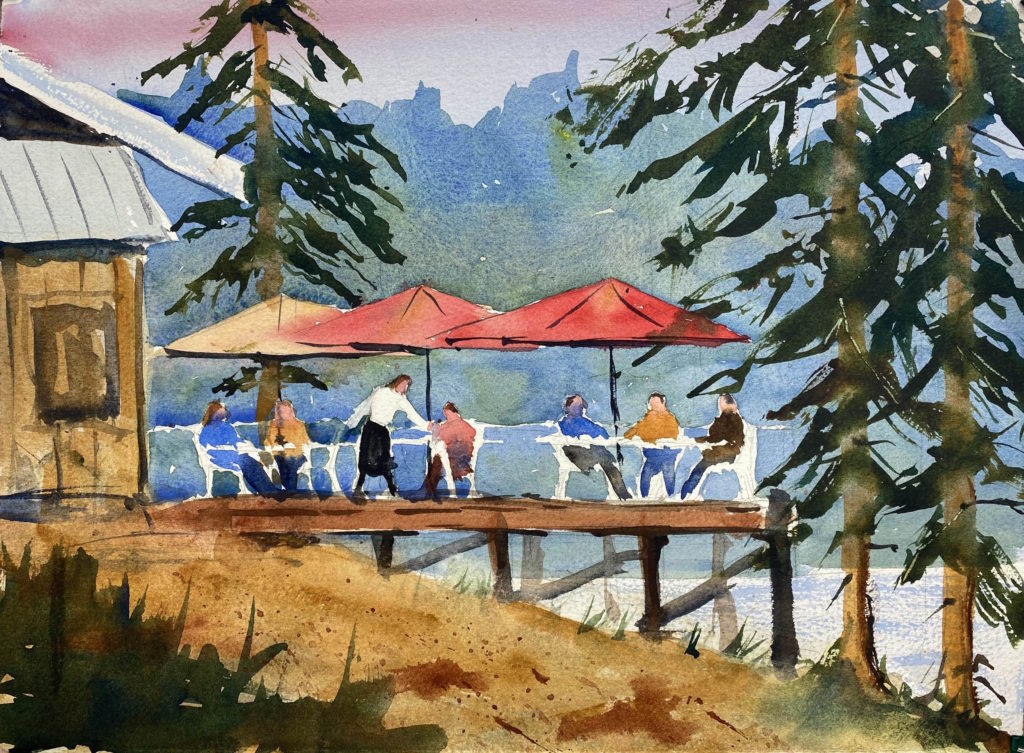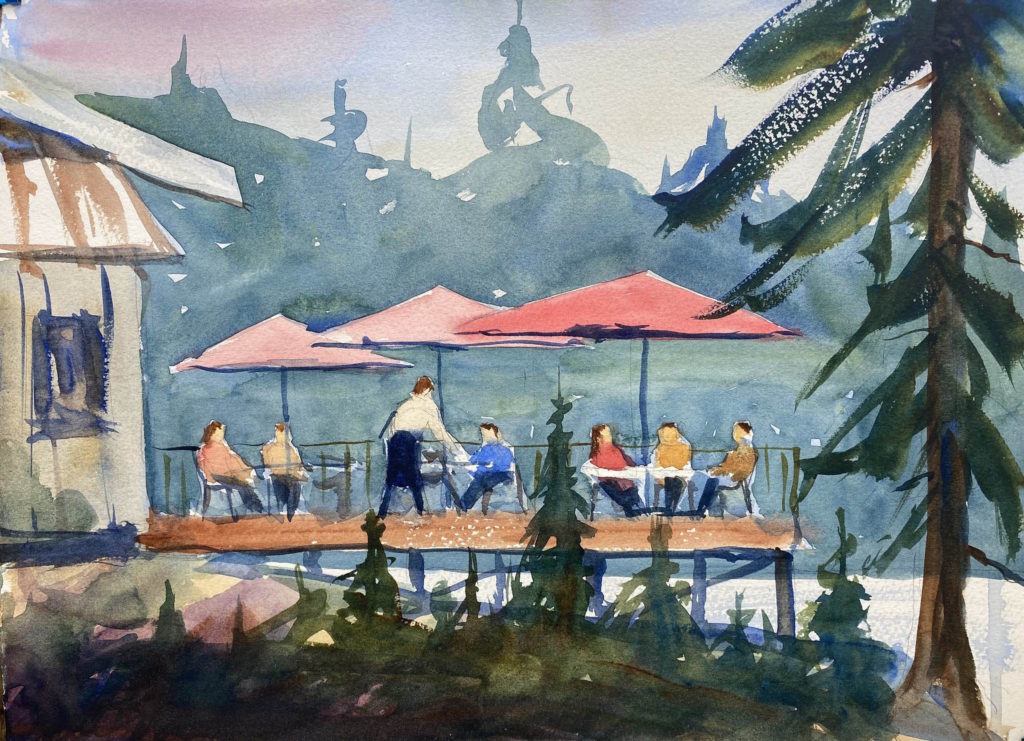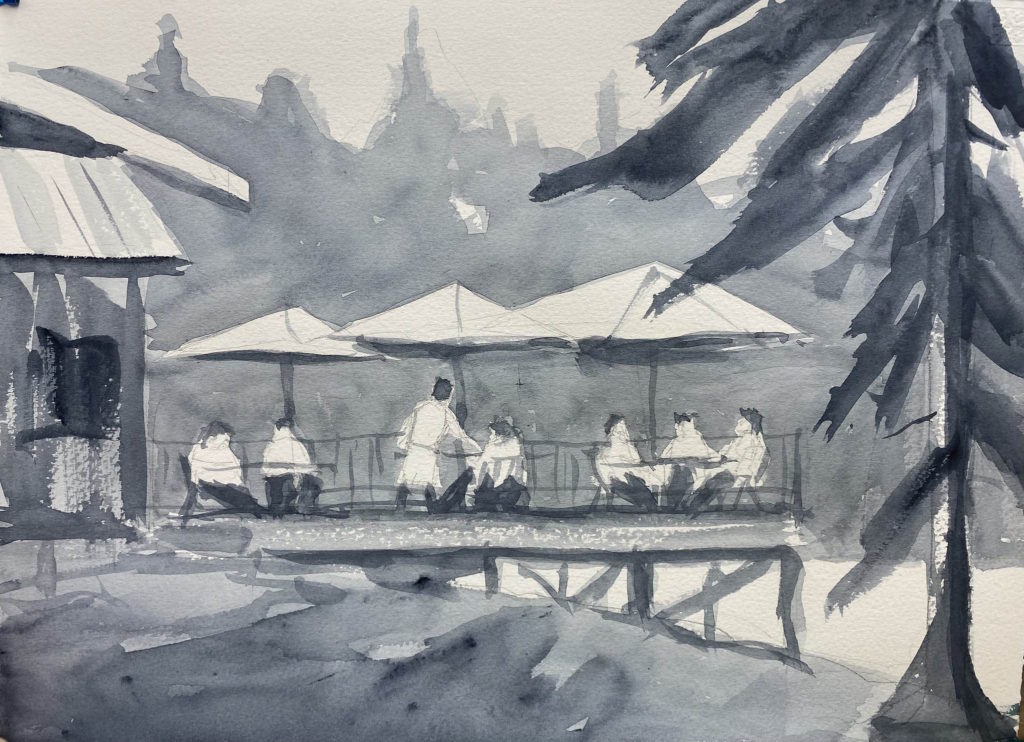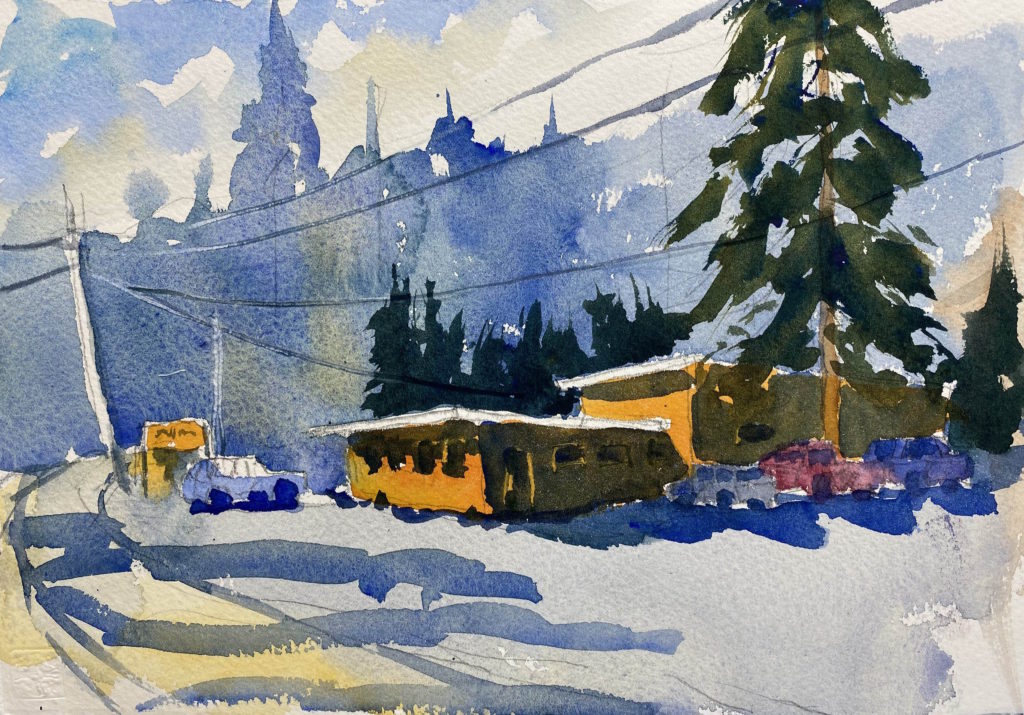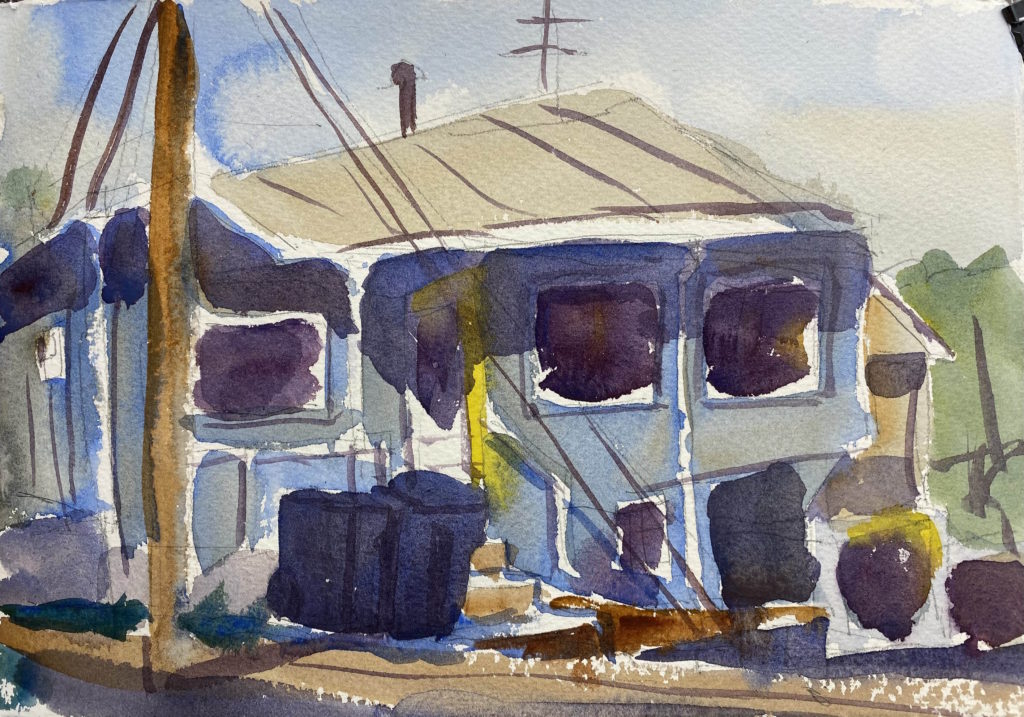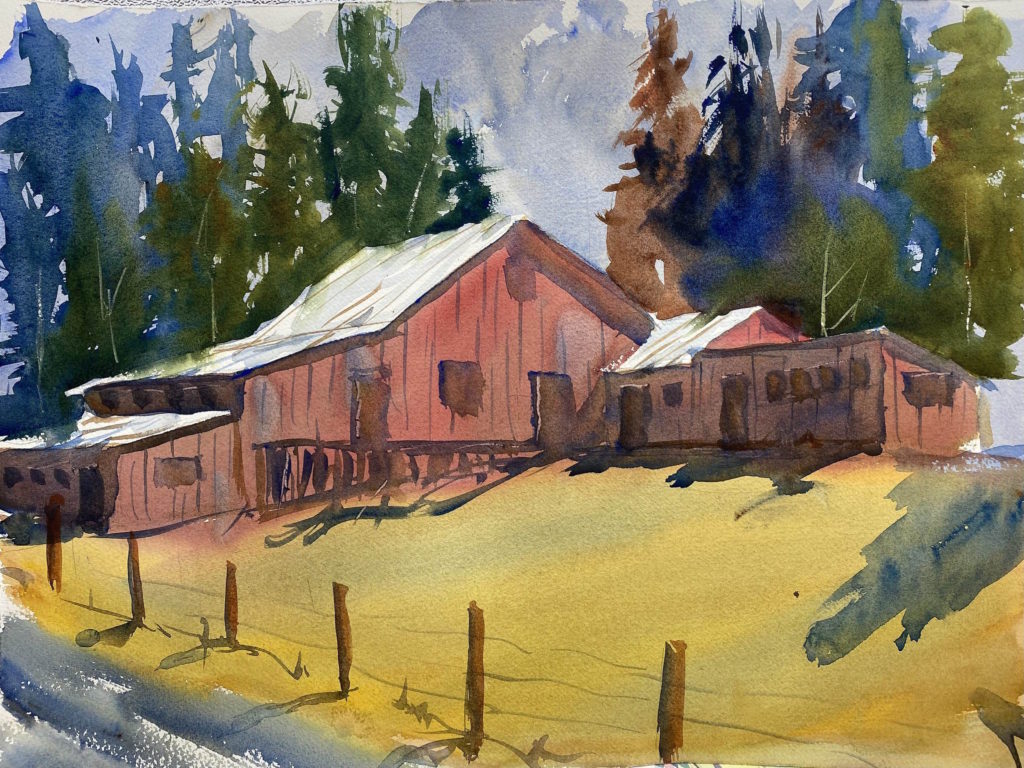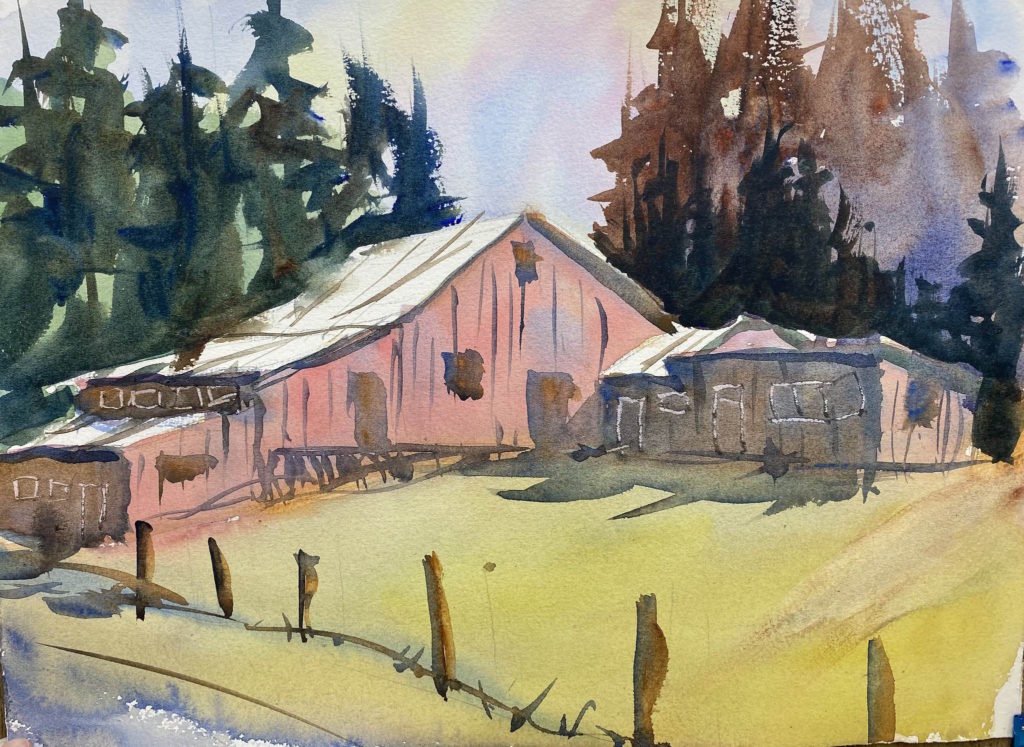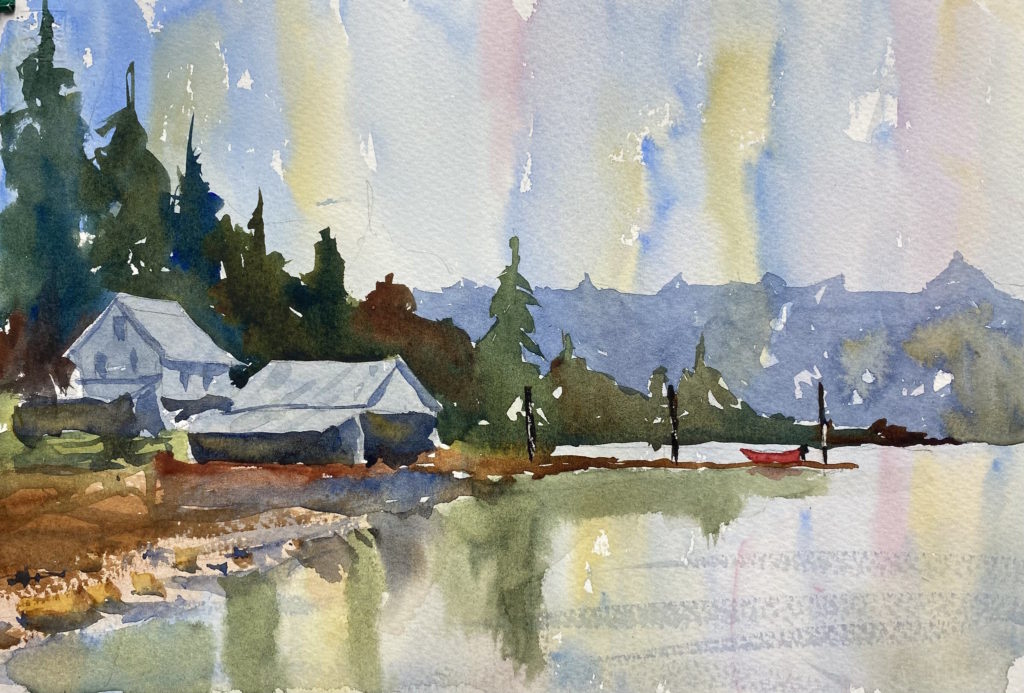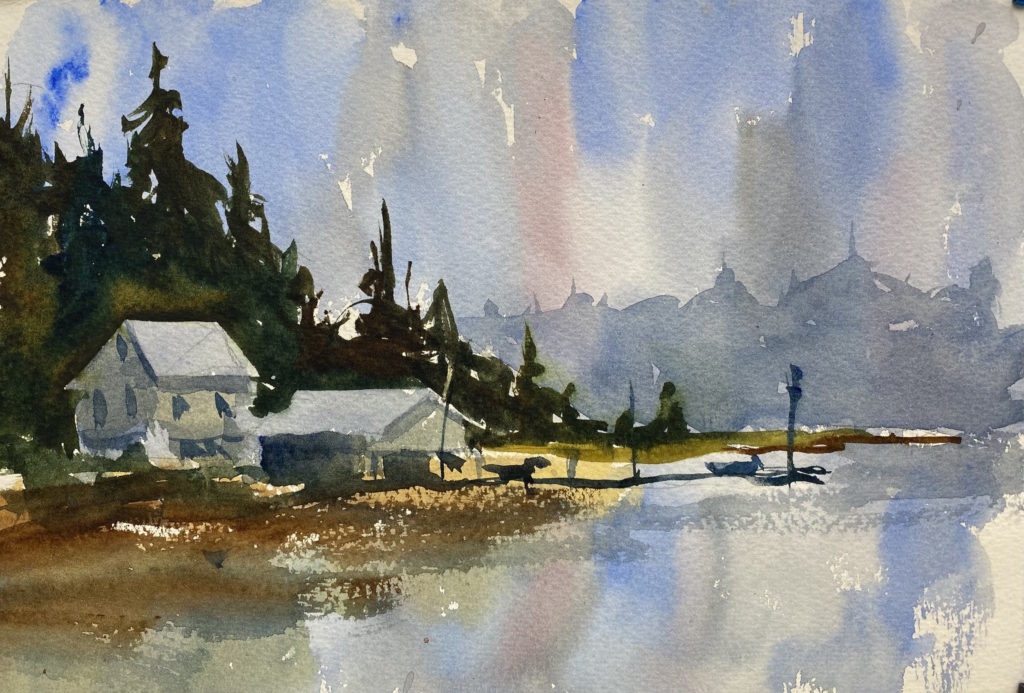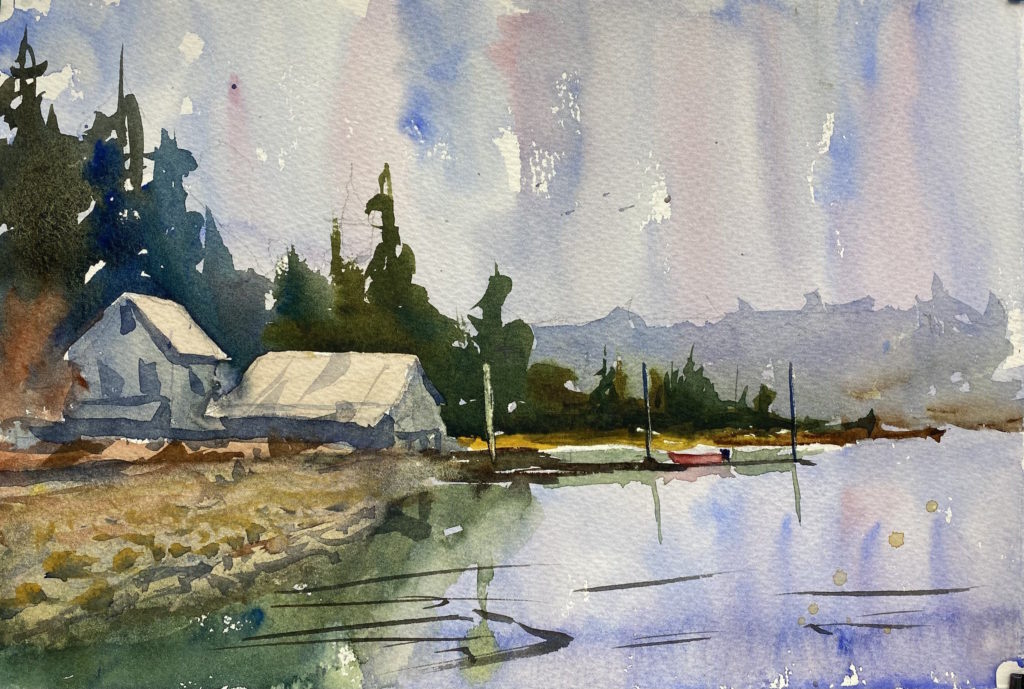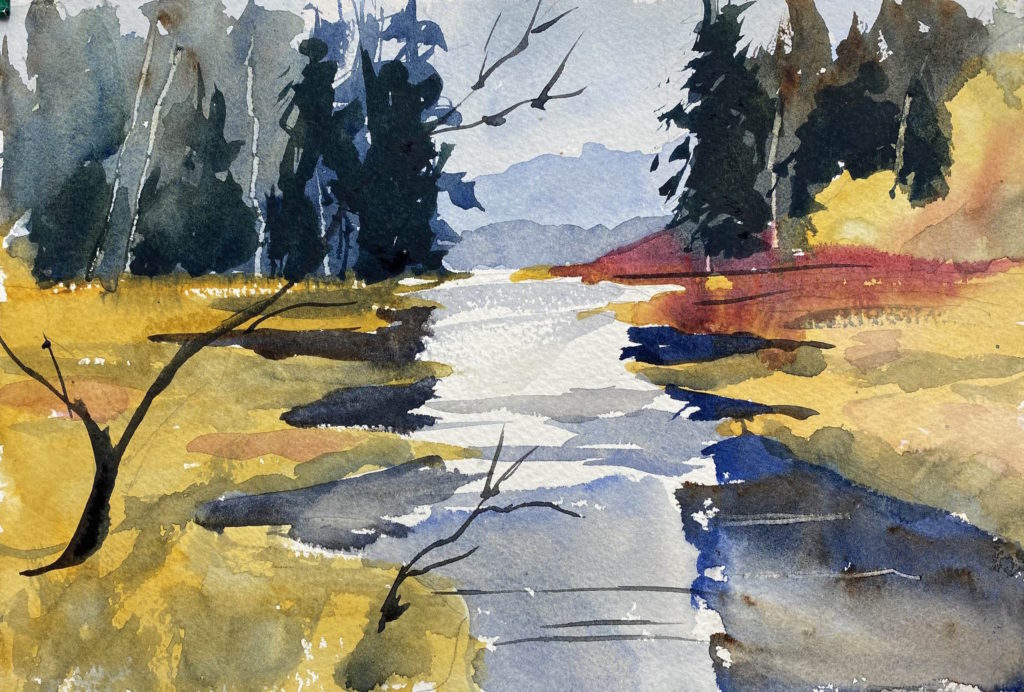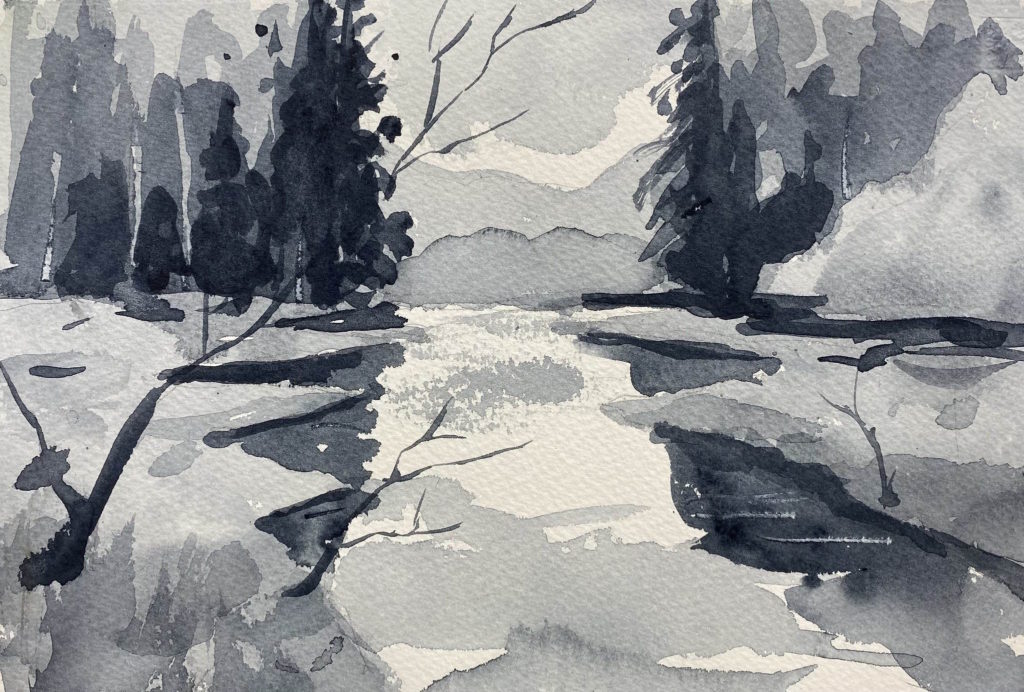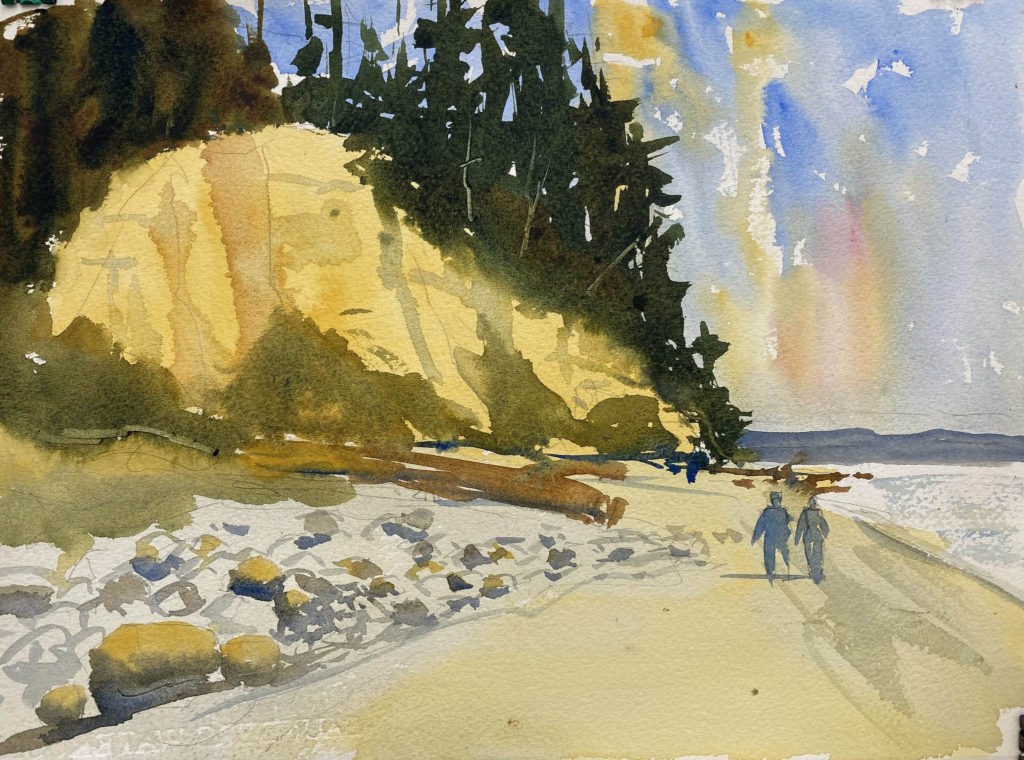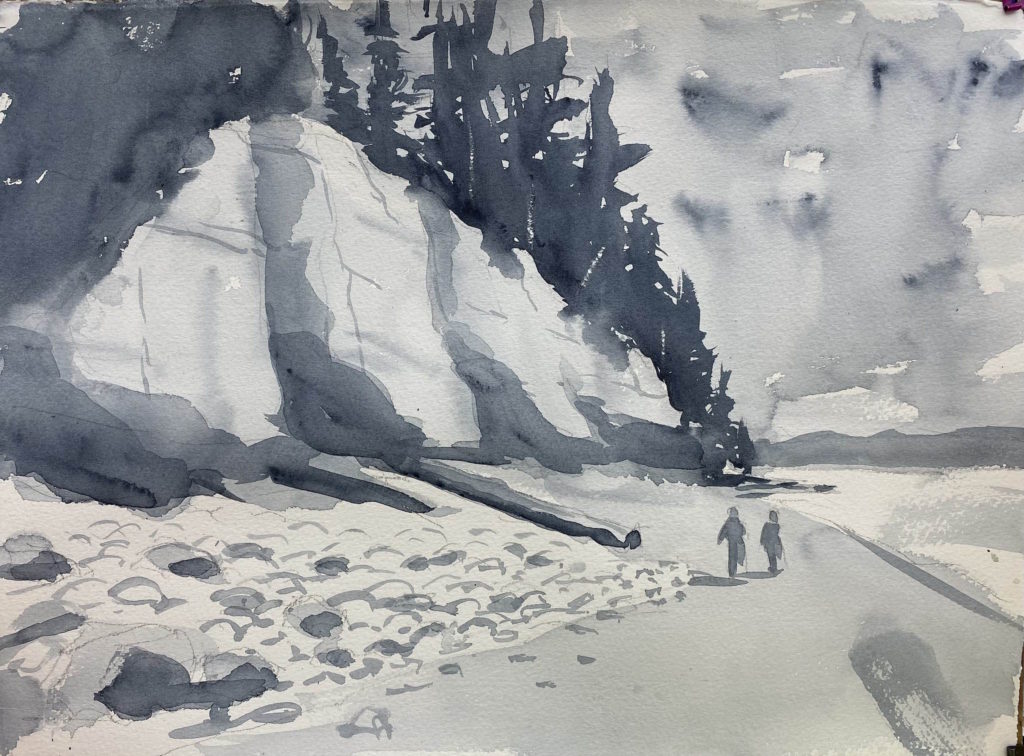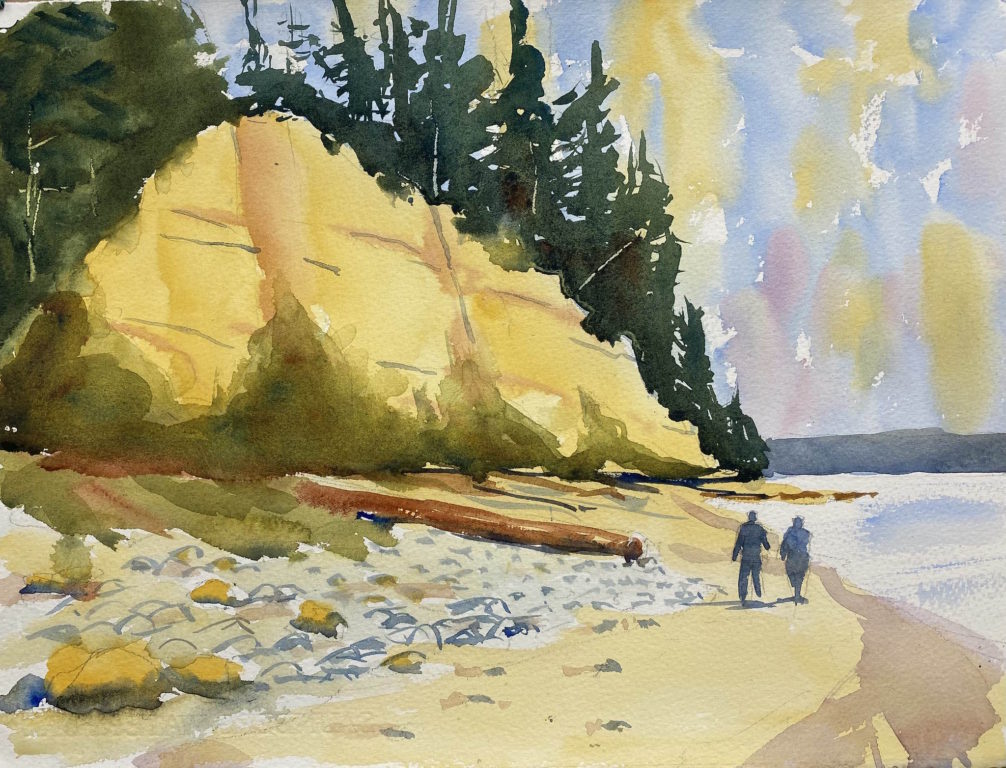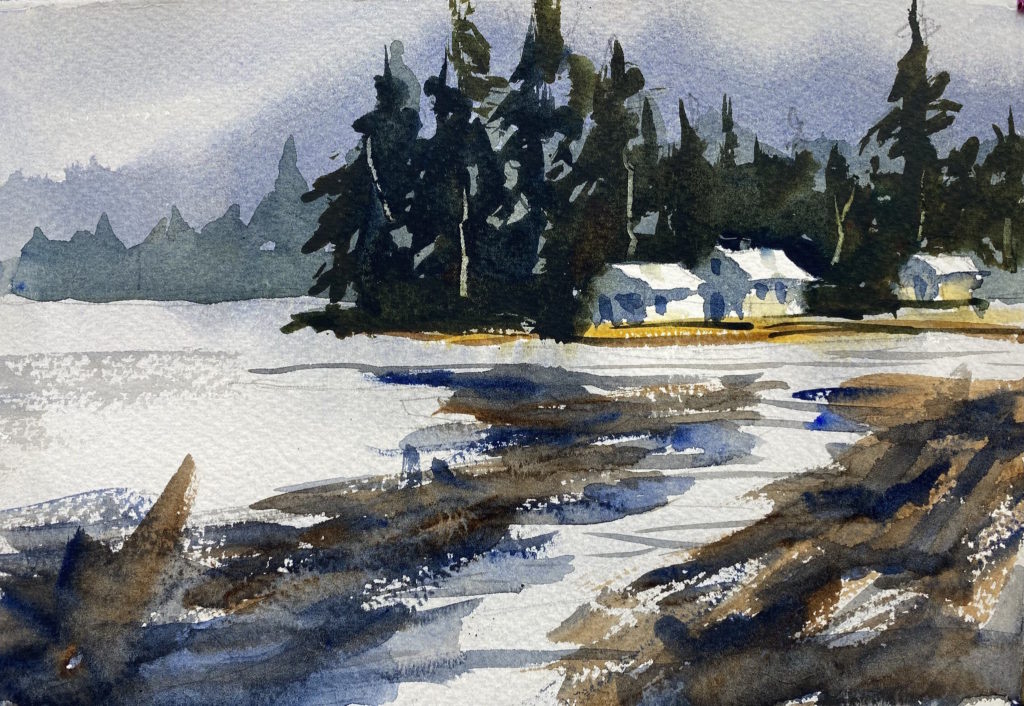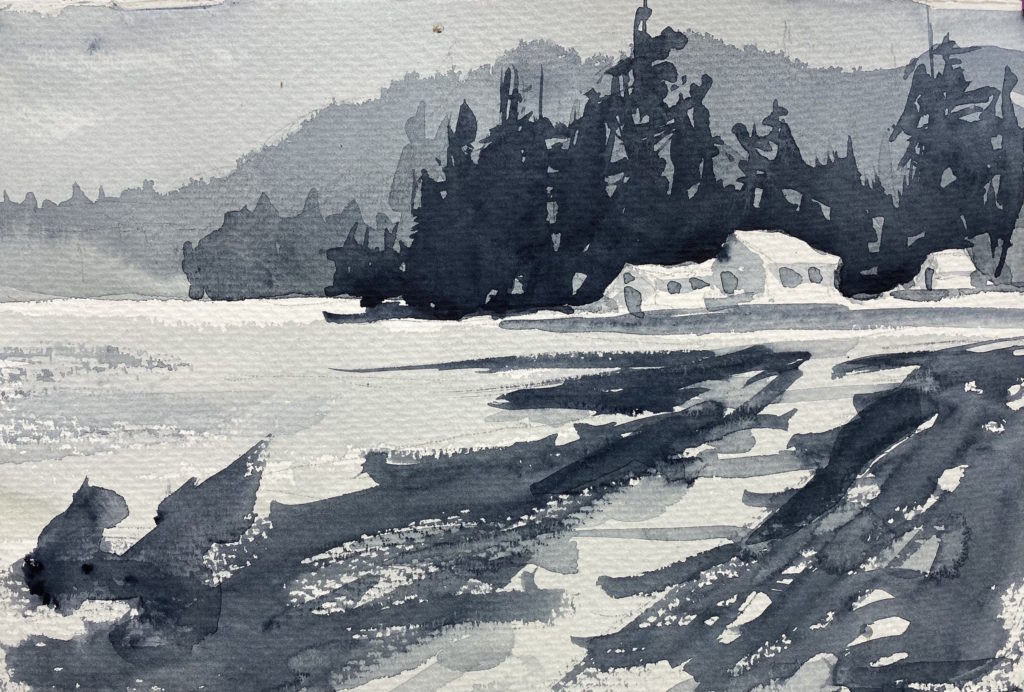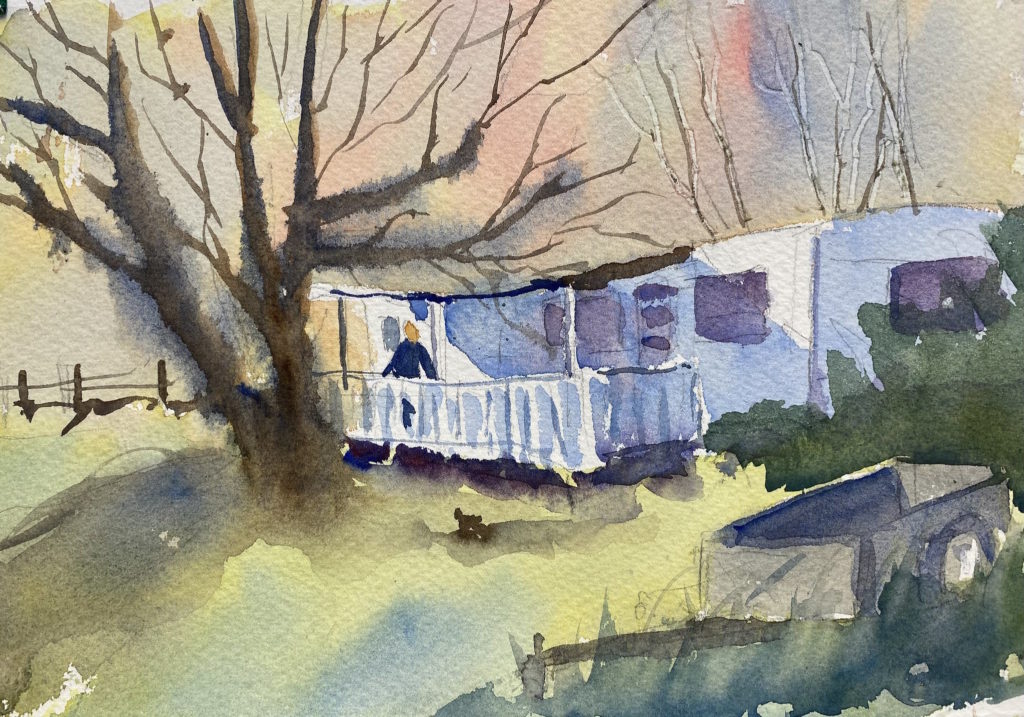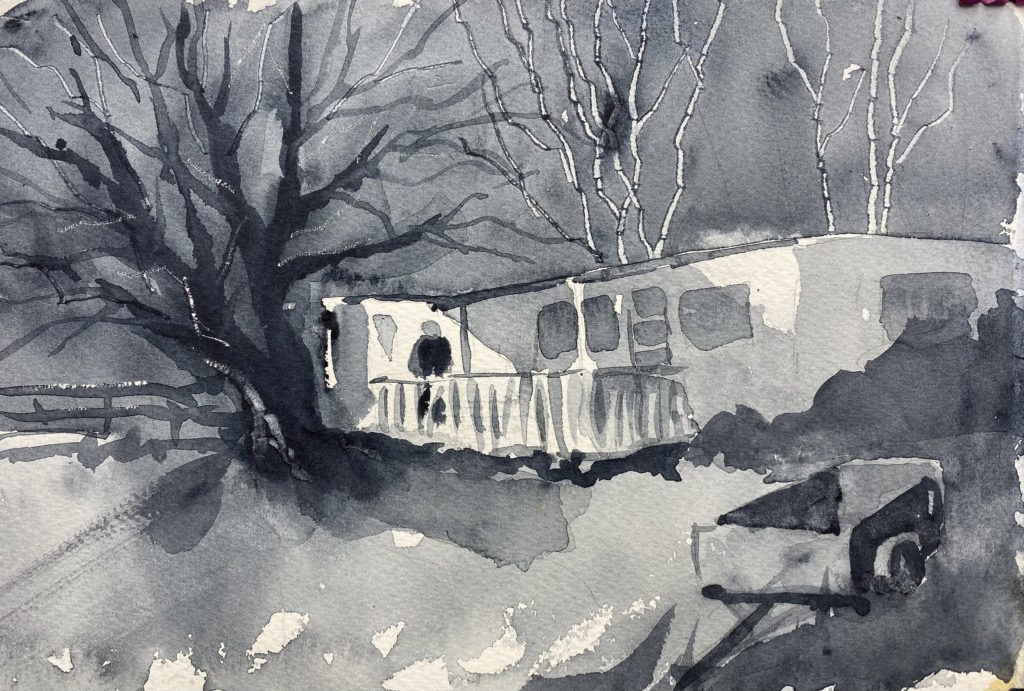An angry old man and a kind woman rancher
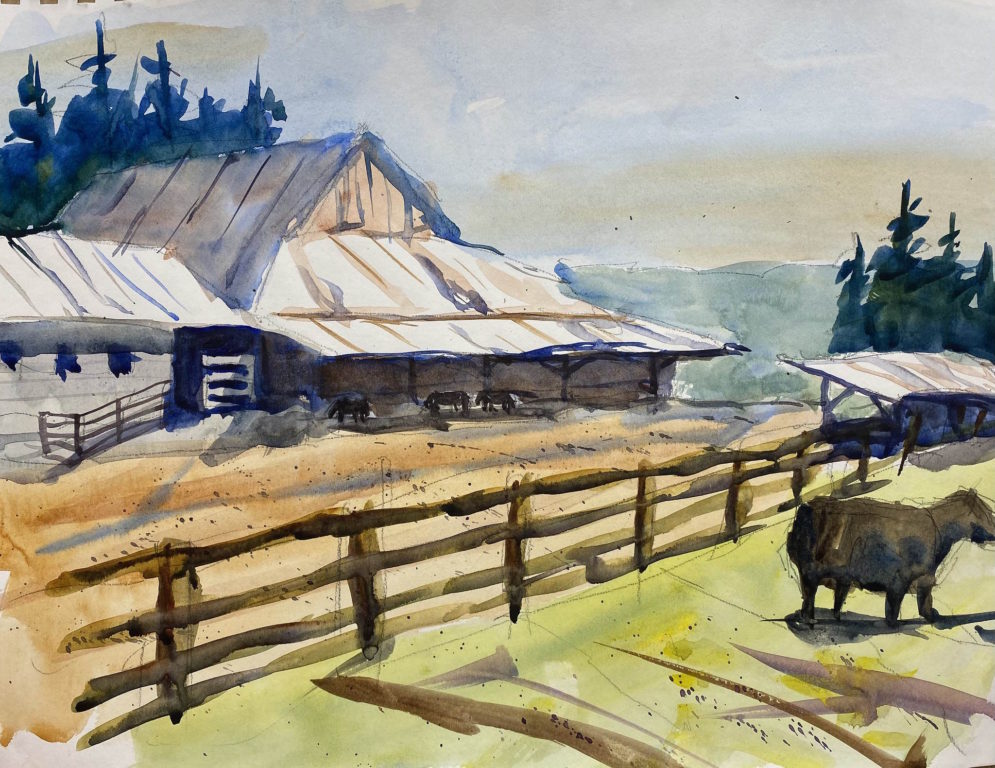
Last week I drove to the Chimacum area to find a place to paint. I found beautiful barns and farmhouses set in a valley surrounded by forests.
It was early morning with strong shadows. I set up my easel on the shoulder of the road and made a pencil sketch of a house across a field on the far side of the road. When I saw a man come out of the house and drive his tractor across the field toward me, I thought he was coming to exchange pleasantries with me. Most people are happy to see artists. Not this fellow.
“What the hell are you doing?? he yelled as he came near. I said, “I’m going to make a painting of your house.” He said, “The hell you are. You get out of here. We have enough robo-calls as it is. Get the hell out of here!”
I said, “You don’t want me to make a painting of your house?” He said with venom, “No! Get the hell out of here.” So I did. I packed up my easel and drove away.
I knew that he had no right to make me leave my place by the roadside. State law allows anyone to take photos or make paintings from a public road. But I wasn’t about to try to get in an argument with a man who was apoplectic with rage. Later it occurred to me that he might have had a gun.
I drove down the road and found a sprawling barn on a hill that just begged to be painted. So I got out of the car and set up my easel again. A pickup from the farm came out to see what I was doing, but this time it was a woman rancher in a denim shirt and jeans, maybe in her fifties. She asked about my painting and said she’d love to see what I came up with. “I have to go to town but you’re welcome to paint anywhere you want,” she said. What a contrast.
So I made this quick watercolor sketch of the barn and one of her cows. She said the cow was just about ready to give birth to a calf.
An angry old man and a kind woman rancher Read More »
